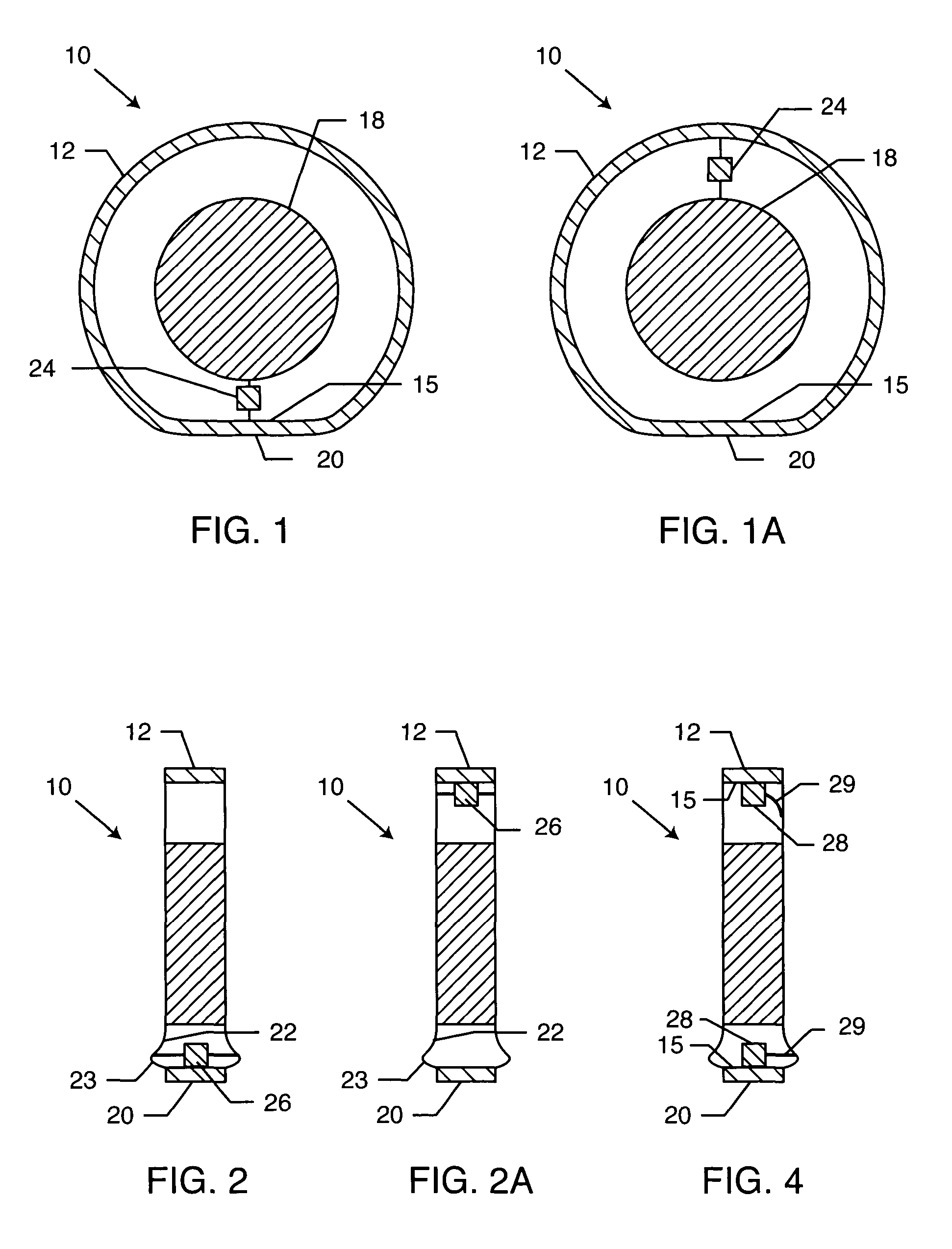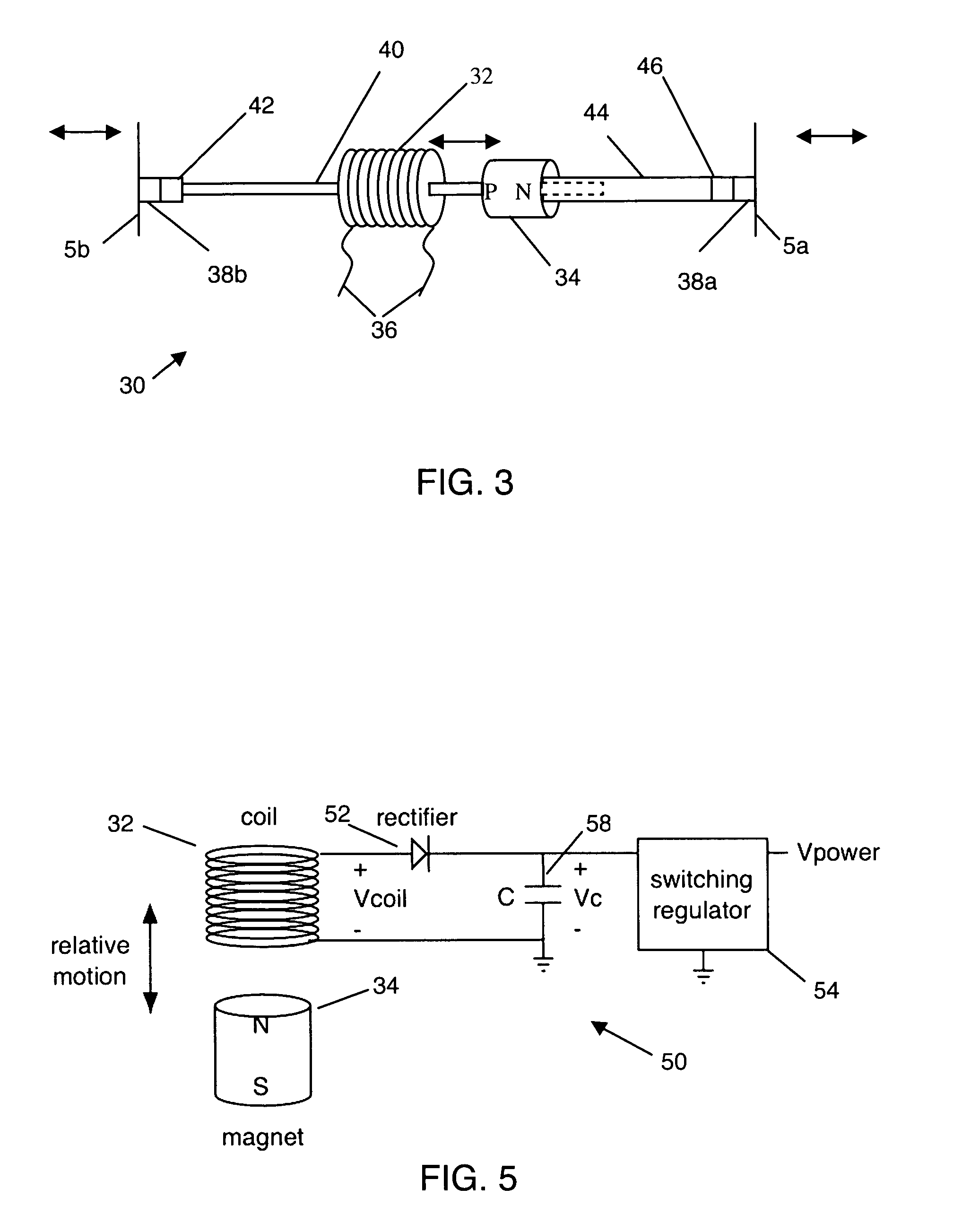Apparatus and method for energy generation within a tire
a technology of apparatus and energy generation, which is applied in the direction of electric generator control, machines/engines, transportation and packaging, etc., can solve the problems of inability to monitor the continuous operation of the tire using this method, the installation of installers can damage delicate devices on the inner rim of the wheel, and the high capacity batteries are too large or expensive to be accommodated within the tire. to achieve the effect of not being damaged
- Summary
- Abstract
- Description
- Claims
- Application Information
AI Technical Summary
Benefits of technology
Problems solved by technology
Method used
Image
Examples
Embodiment Construction
[0059] FIGS. 1 and 2 show a loaded vehicle tire 10 mounted on a rim 18 and its mechanical reciprocation induced by the tire 10 going from round to flat at the tire-to-road contact region 20. The following reciprocation motions are periodic (once per revolution)
[0060] as shown in FIG. 1, the shortening of the distance from the rim to the tire tread as the tire temporarily deflates when on the contact region; and
[0061] as shown in FIG. 2, on the tire shoulder just above the tread, the widening of the distance between the tire inner walls as each wall deflects (balloons) outward when on the contact region.
[0062] Both reciprocating motions are used to generate power by connecting an energy conversion device within the tire 10 to utilize the motions. A radial deflation generator 24 connects between the tire tread 12 inner surface 15 and the rim 18 as shown in FIGS. 1 and 1A. An inner wall deflection 26 generator connects between the two inner wall surfaces 22 of the tire 10 at shoulder 2...
PUM
 Login to View More
Login to View More Abstract
Description
Claims
Application Information
 Login to View More
Login to View More - R&D
- Intellectual Property
- Life Sciences
- Materials
- Tech Scout
- Unparalleled Data Quality
- Higher Quality Content
- 60% Fewer Hallucinations
Browse by: Latest US Patents, China's latest patents, Technical Efficacy Thesaurus, Application Domain, Technology Topic, Popular Technical Reports.
© 2025 PatSnap. All rights reserved.Legal|Privacy policy|Modern Slavery Act Transparency Statement|Sitemap|About US| Contact US: help@patsnap.com



